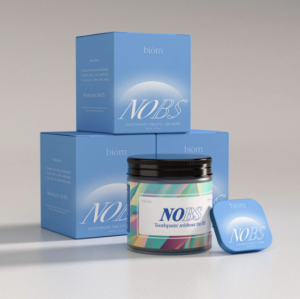
Effective ligatures for correct isolation with the rubber dam
Simona Chirico
The SARS-CoV-2 (Covid-19) pandemic has made the rubber dam (RD) an indispensable tool for the majority of dental procedures, as as a preventive measure it is able to protect operators from the risk of contagion at due to exposure to saliva, blood and aerosols/droplets produced during dental procedures.
Literature studies have shown that once the dam has been positioned adequately, there is a reduction in bacterial aerosols of around 70-98.9%, significantly limiting the inhalation of infectious aerosols by dental personnel.
RD also protects the patient from the possible aspiration or ingestion of instruments, medications, irrigating solutions and tooth debris/materials, protecting dentists from possible future legal liabilities, as well as allowing the isolation of the operating field from saliva and organic liquids which, in contact with the dental elements undergoing treatment, can compromise the success of adhesive and disinfection techniques in endodontics.
Based on the above-mentioned advantages, RD isolation is now considered standard practice by dental professionals. However, for optimal isolation and to keep the dam in the correct position it is also possible to use wooden wedges or ligatures with dental floss, suitable for isolation procedures of the entire quadrant or multiple teeth.
Materials and methods
In a study published in the Journal of Prosthodontic, the authors introduced the classification of dental floss ligatures used during rubber dam placement, useful for optimizing this procedure in dentistry. Ligatures are divided into traditional, self-ligating single-loop and self-ligating double-loop, as well as those with a new state-of-the-art “compound ligature” design that incorporates a combination of one or more simple ligatures.
This new design can provide better isolation and more consistent gum tissue retraction. Furthermore, thanks to the advanced technique applied, the composite binding offers better stability and prevention of the dam sheet from slipping over the binding by almost hermetically isolating every small surface.
The authors propose this new classification of ligatures performed with dental floss for excellent isolation using a rubber dam:
- simple ligatures;
- compound ligatures.
SIMPLE LIGATURES
- Traditional ligation (surgical knot): where a knot is created, with the surgical suture interrupted, by positioning the dental floss around the neck of the tooth at the height of the gum contour. A suitable length (20-30cm) is cut and doubled into a U shape, placed around the neck of the tooth where a double knot is then created in a clockwise direction. The knot is then tightened securely around the tooth by subsequently tying a single knot in an anti-clockwise direction. The main advantage of this method is the fact that it is quick and easy to implement; however, the risk of this type of ligature is that it may loosen after application.
- Single-loop self-ligating ligature: This knot is prepared outside the patient's mouth. A piece of dental floss of suitable length (20-30 cm) is cut and folded in two into a U shape. A loop is then created by passing the curved end of the dental floss over the two free ends. The knot is then placed around the cervical area of the tooth and then tightened towards the neck of the tooth.
- Double-loop self-ligating ligature: This ligature is similar to the single-loop self-ligating one but with two turns. A piece of dental floss of suitable length (20-30 cm) is doubled into a U shape and a loop is created by passing the two free ends over the curved end of the dental floss. However, unlike the single-loop self-ligating ligature, the curved end is inserted inside the loop and only partially pulled out. The curved end of the floss is then opened, brought around the entire knot until it encircles the free ends. Finally, the free ends are pulled to tighten the double loop down. Generally the double-twist self-ligating ligature is easier to tighten as it allows the dentist to separate the loose ends or together to tighten the knot, allowing him to tighten with one hand if necessary. The double-wrap ligature is also tighter and more stable around the neck of the tooth.
COMPOUND LIGATURES
This ligature, proposed and implemented by the author of this article, Dr. Osama A. Alkhatib, consists of a single or double loop self-ligating ligature attached to one, two or more knots. This ligature is designed to isolate teeth prepared for crowns, bridges, or cavities with deep margins, especially palatal and lingual cavities.
Conclusions
The compound ligation design can provide better isolation and more consistent gum tissue retraction than other types of ligations. Furthermore, thanks to the advanced technique applied, this ligature will offer better stability, preventing the dam sheet from sliding over the ligature itself.
 Related articles
Related articles
NOBS by biom and the Department of Comprehensive Dentistry at The University of Texas share findings of comprehensive study surrounding fluoride-free toothpaste tablets.
Oral Hygiene & Prevention 20 December 2024
Oral hygiene evaluation for effective oral care in preventing pneumonia in dentate elderly
The purpose of this study was to establish criteria for the visual evaluation of oral hygiene by analyzing the relationship between status of oral hygiene and number of oral bacteria in saliva for...
Endodontics 20 May 2024
The most frequently intracanal antibacterial dressing currently used is calcium hydroxide (Ca(OH)₂), whose antibacterial capacity is due to the alkalinity which produces a release of highly...
Pediatric dentistry 29 March 2024
A major clinical trial led by a University of Michigan School of Dentistry professor has shown that silver diamine fluoride (SDF) is effective in stopping tooth decay when applied to the teeth of...
News 05 December 2023
Effective Cavity Prevention Program Coming to New Hampshire Schools with $1M in Funding
A school-based dental program designed to prevent up to 80% of cavities is set to launch in three New Hampshire school districts.
 Read more
Read more
Oral pathology 24 October 2025
Isolation and characterization of dental pulp stem cells from a supernumerary tooth
Dental pulp stem cells (DPSCs) were primarily derived from the pulp tissues of primary incisors and permanent third molar teeth, whereas no report to our knowledge has yet been documented on deriving...
Editorials 24 October 2025
From mentoring workshops to leadership insights, the last week’s IU School of Dentistry (IUSD) fall faculty conference and staff retreat brought faculty and staff together respectively for two days...
Products 24 October 2025
At the American Academy of Periodontology’s Annual Meeting, Carestream Dental continues to deliver what’s next in dentistry with the launch of CS 3D.
News 24 October 2025
As dental professionals prepare to wrap up 2025, many are setting ambitious goals for the year ahead, yet few have a clear, actionable plan to achieve them.
News 24 October 2025
The Yankee Dental Congress will take place from January 29, 2026, through January 31, 2026, at the Thomas M. Menino Convention & Exhibition Center in Boston.















